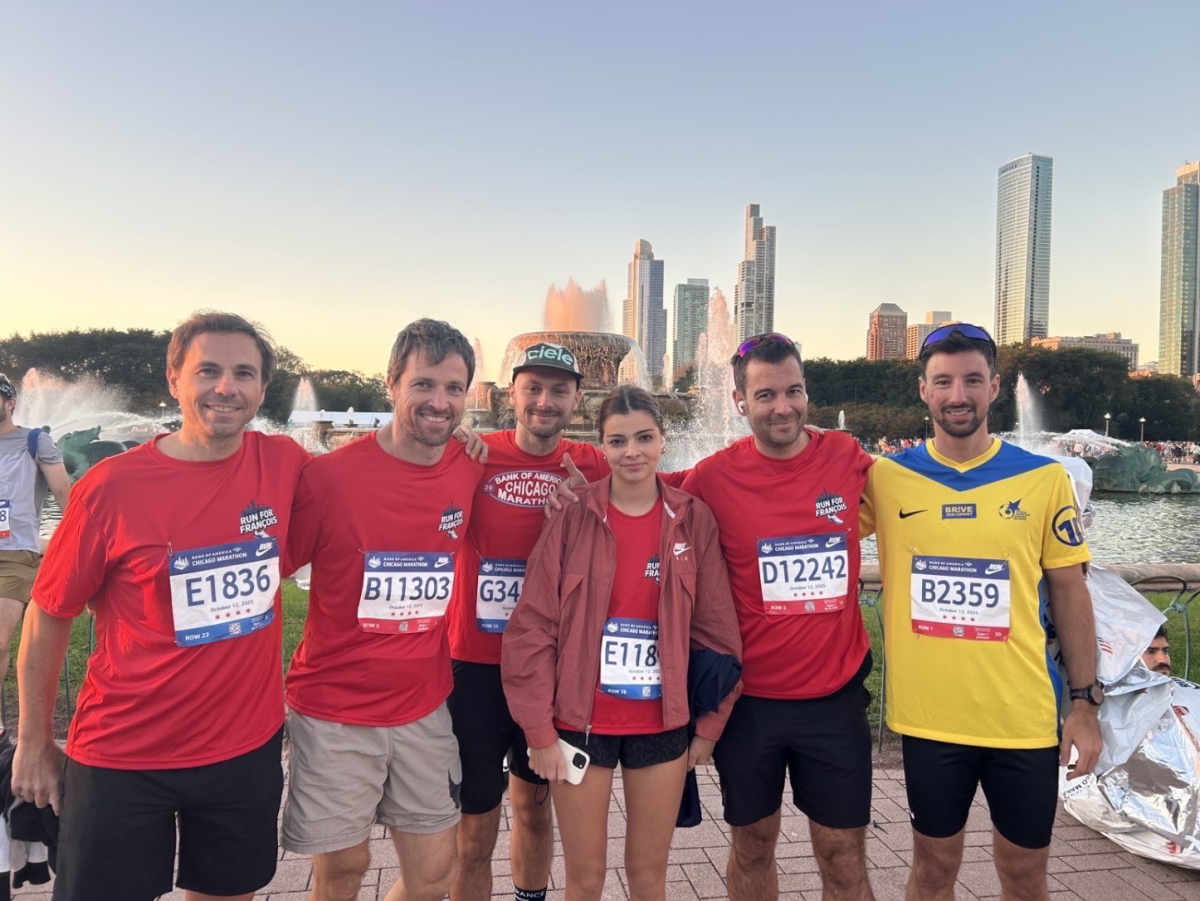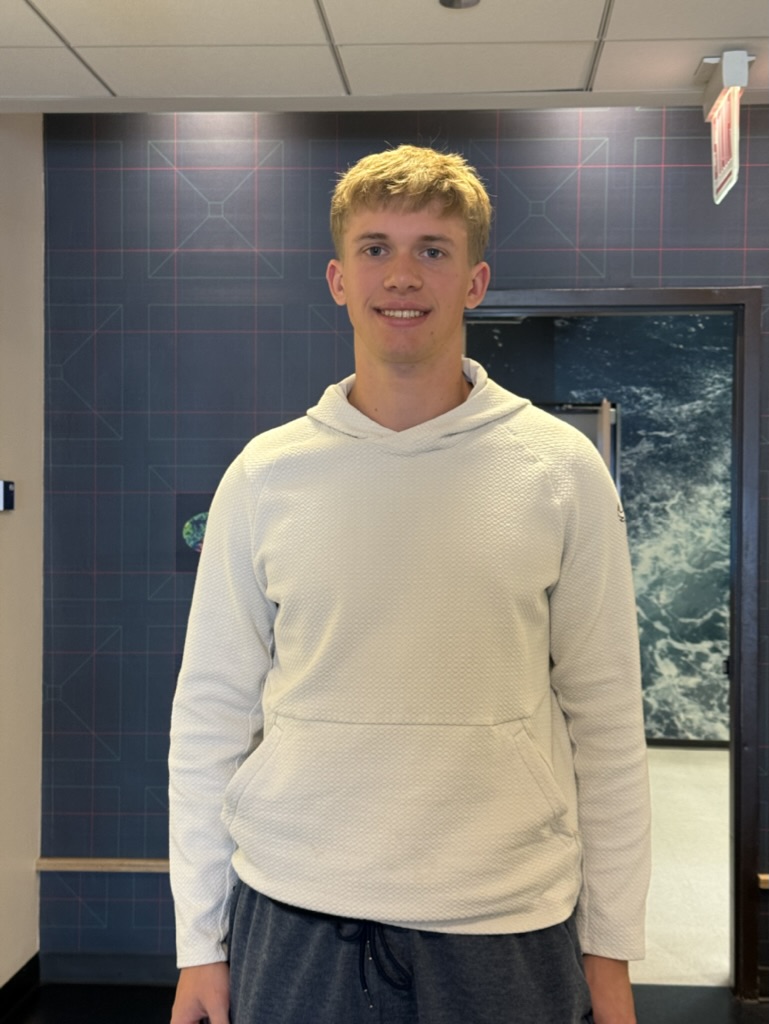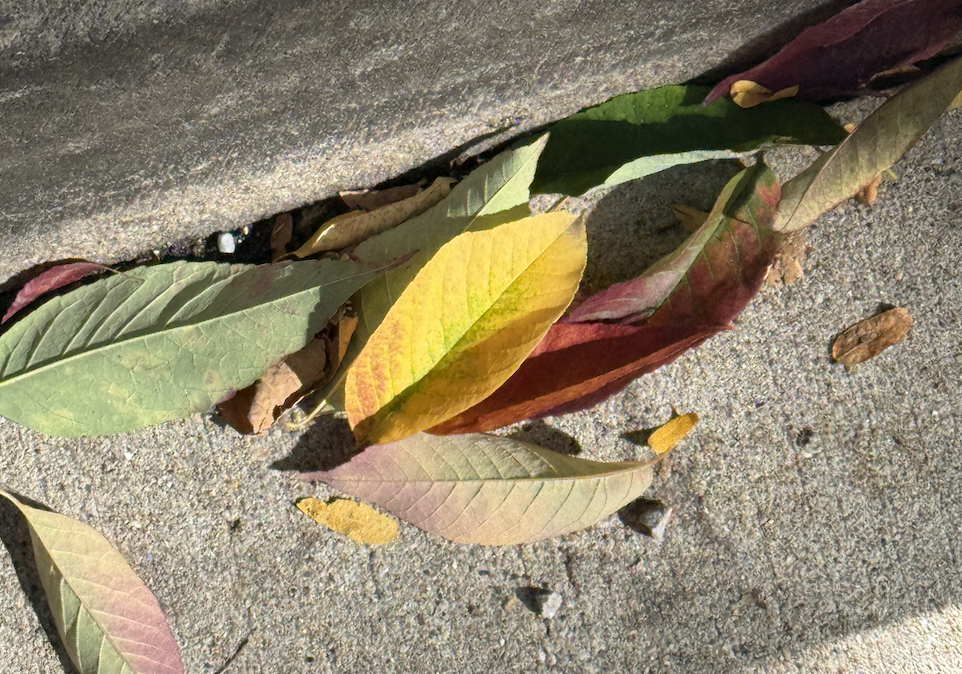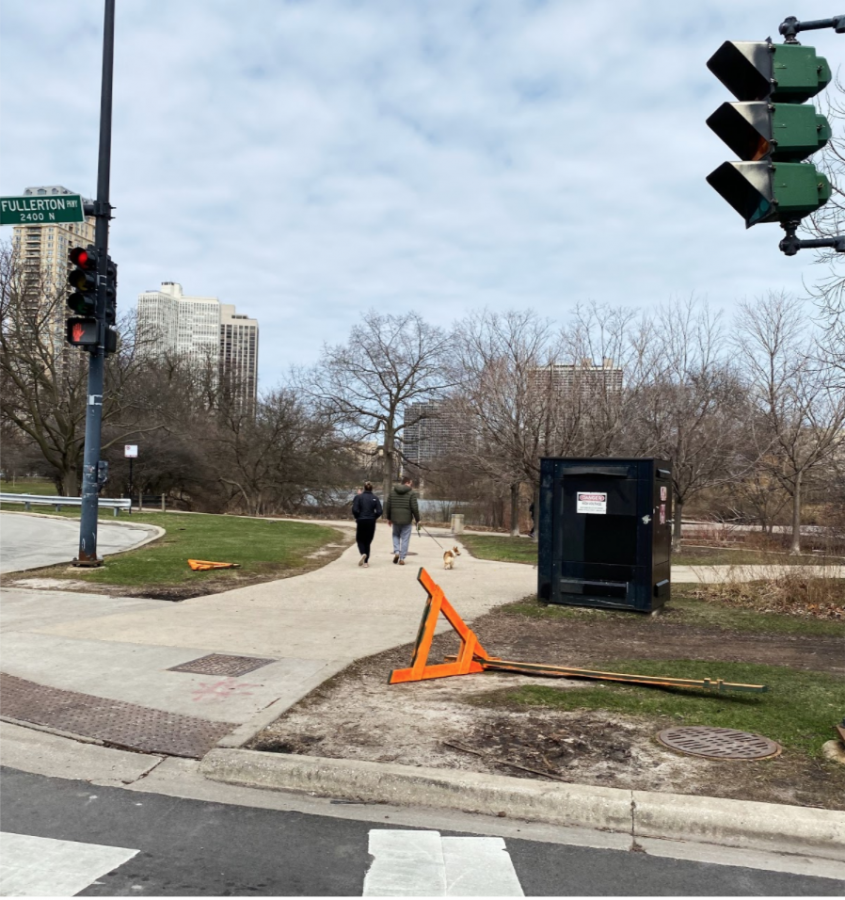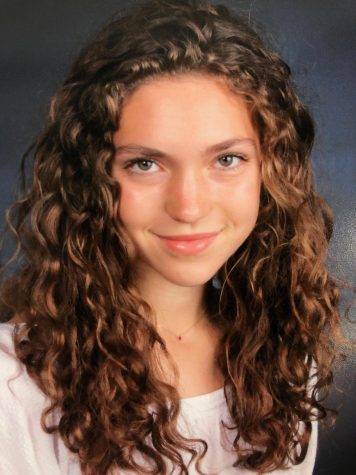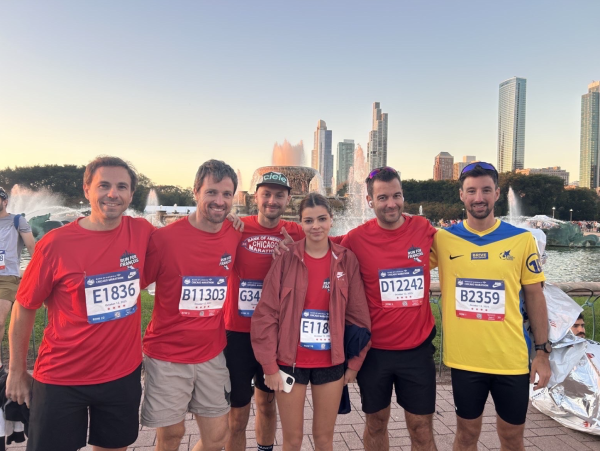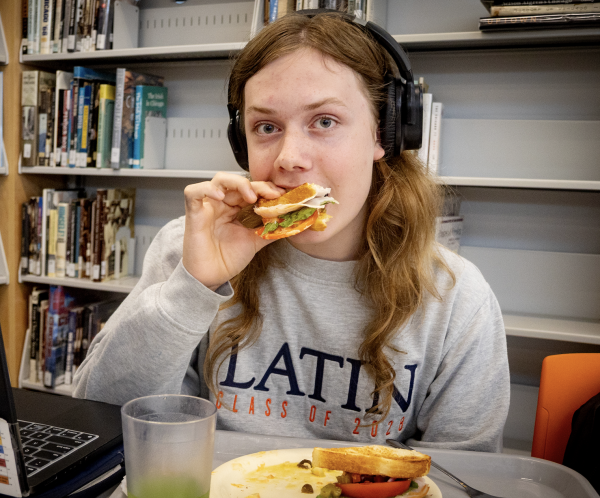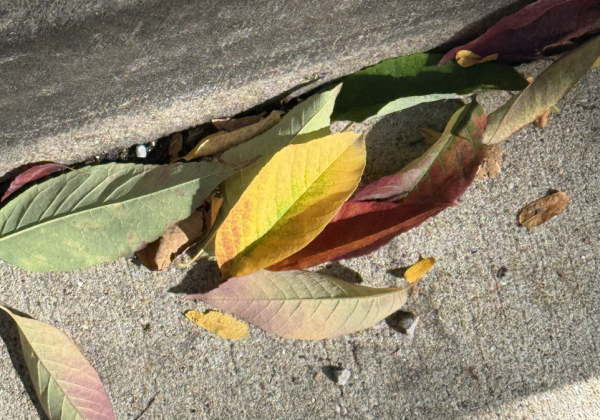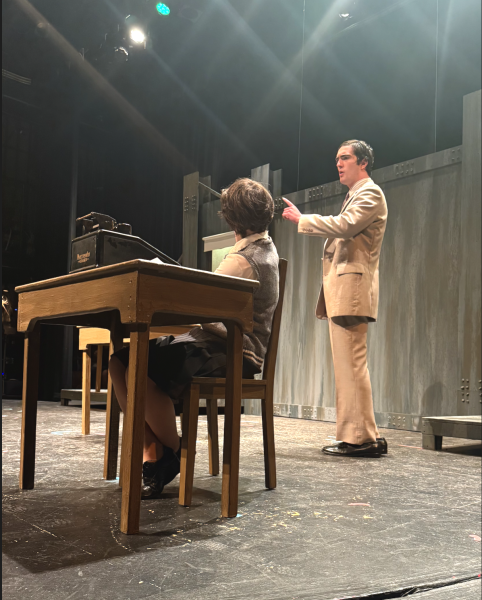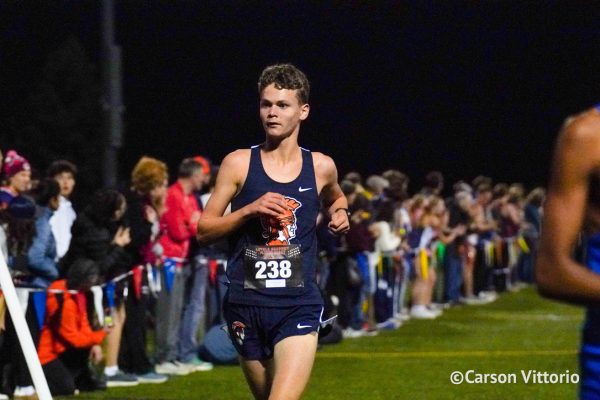Getting Outside Becomes Harder as Parks Close
April 3, 2020
On Thursday, March 26th, Mayor Lori Lightfoot issued an executive order closing the Lakefront Trail and its adjoining parks, the Chicago Riverwalk, the 606, Millenium Park, and numerous other public spaces. Signed in response to the crowds of Chicagoans that flocked to these spaces amid their first week of government-mandated social distancing, Lightfoot and other officials hope this order will help slow the spread of COVID-19. To enforce the closures, police officers can issue fines of up to $500 to those who do not leave the premises after an initial warning. These restrictions hit particularly close to home for members of the Latin community who frequent these spaces, stirring disagreements about whether such action was necessary.
Junior Macy Krambeck recalls visiting the lakefront the Wednesday before its closure. “We were just at the ledge and there were a lot of people but no one was congregating really. A lot of people were just sitting with one or two people and a lot of people were running.” Unlike Chicago’s typical groggy March day, it was 56 degrees and sunny. Macy says, “It was really nice out. That’s why there were so many people.”
Macy’s visit was cut short, however: “The police came and brought a megaphone and then started yelling at people right next to us. It literally felt like a movie, they were like ‘You can’t congregate either walk or run no sitting at the ledge,’ and so we got our stuff and started walking.” Illinois’ March 21st Stay at Home Order prohibited gatherings of more than ten people and required people to stay six feet apart, but Macy says, “no one was listening because even when we were walking back there were people playing basketball, people were playing football, doing all this stuff.” If the government had really wanted to enforce social distancing outdoors, she says, “I think they should’ve maybe made it more clear that you can only walk or run outside. I think people thought that you could just be outside so maybe they should’ve given one more warning.”
After the order was issued on Thursday, the Parekh family drove to see if there was anywhere left on the path for them to run. “When we first heard about the path closing we thought it was only from Oak Street to Fullerton,” says sophomore Ava Parekh. “But when we could not get on the path anywhere we drove up Lake Shore Drive and realized the entire path was closed.” Chicago is standing firm in its decision, and Ava says, “These closures are being enforced by police officers in every park and in most entrances to the Lakefront path, and the Lakefront path is barricaded and fenced off in most places as well.”
With closures like these, it seems like Chicago is ahead of other cities in terms of enforcing social distancing. New York City, with over twenty times as many coronavirus cases as Chicago is currently keeping city parks and park restrooms open, and permitting solo exercise so long as people remain 6 feet apart. While the city recently closed playgrounds and athletic facilities, its running paths remain open. Alexis Geller, a high school junior from Manhattan’s Upper East Side, says, “Two weeks ago I was running around the reservoir, and it was crowded with people.” Places like the reservoir are still open, and she says, “Other larger paths in the park remain open for runners and bikers.” New York is also struggling to enforce walking-and-running-only policies. “The great lawn, a place where people gather to just chill out or play spikeball or whatever else, is open and kids have been going there with friends on warm days,” she says.
While Alexis thinks it is important for people to get outside and exercise, she is concerned that these public spaces further the spread of the virus. “I worry that it’s too dangerous because it’s hard to keep a constant six feet of distance from everyone around you and people can be running who feel healthy in that moment but may begin feeling symptoms shortly after and have put others at risk.” For these reasons, she says that despite the city’s policies, “It’s probably too dangerous for people to keep running on these paths because the only true solution to this problem, in my opinion, is complete self-isolation.”
Latin biology teacher Ms. Kutschke agrees that, while unfortunate for runners, closing city parks is a necessary step in slowing the spread of the virus. “Being a runner, it was disappointing to hear, but people were being careless,” she says. “People really need to follow directions and stay indoors with appropriate distance from each other,” and closing the parks will encourage people to do just that. She believes that Chicago’s steps are necessary, even if they are taking action before other cities. “Chicago and Illinois as a whole have been proactive in their efforts to stop the spread through social distancing.”
Ava also considers closing the parks as a necessary evil. In her opinion, without closing the parks entirely, it was too hard to prevent people from congregating. “The few days before the closure happened, we went to both the turf by Latin and the Wilson track and in both places, there were tons of people playing tennis, soccer, softball, and basketball. None of these people were following social distancing guidelines so I do think closing the path and adjacent parks was necessary for public safety.”
Macy, on the other hand, believes that Mayor Lightfoot’s response was a little too drastic: “It’s not like a lot of people are outside like normally or at the lakefront most days, it’s only because it was really nice out.” She feels that the decision was inconsistent with messages encouraging people to get outside to run or walk. “I don’t think that’s fair because they made such a big deal about how you can exercise outside but I think it’s going to be dangerous running on the sidewalks.” Perhaps Macy is not the only Chicagoan that feels this way, as the barricades by North Pond have been broken down, and plenty of people walked and ran along Diversey Harbor the Wednesday after the closings.
Chicago’s infection count continues to rise and social distancing rules get stricter, and for those who adhere to city policies, it is beginning to feel as though there are fewer and fewer ways to get outside. Ava, for one, often finds herself having to drive outside of Chicago to get her runs in. “For longer runs and workouts, we have been driving to forest preserves in the suburbs, such as Waterfall Glenn, where all the running trails and tracks are still open,” she says. Despite the added difficulties, Ava and Ms. Kutschke both encourage people to stay active during these stressful times. With High-Intensity Interval Training and Pilates classes on Youtube, and an increasing number of gyms streaming their classes online, it is entirely possible to exercise without leaving your home. However, with people feeling more cooped up than ever, getting fresh air is still important, and as Ms. Kutschke says, “If you’re able to get out for a walk or run at a time when streets and sidewalks in your neighborhood aren’t crowded, that’s great too!”


















